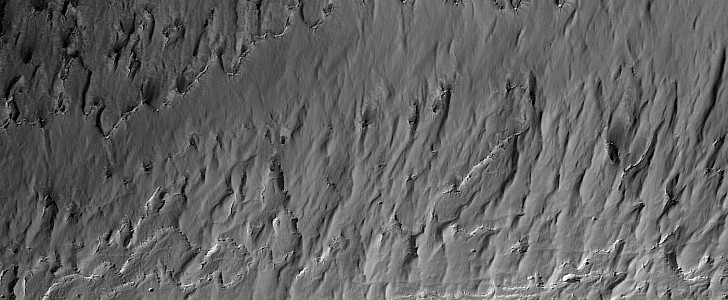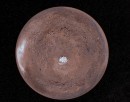One of the defining traits of a civilization is its ability to put ideas in writing. This allows future generations to learn from the experiences of past ones and opens up worlds of possibilities, from art forms to the higher mathematics that allows said civilization to eventually go beyond its natural borders.
It’s generally agreed that writing as we know it today first came to be about 5,500 years ago on this planet, in a place we now know as Iraq. But long before ideas got to be drawn up into symbols packed together to form words, we had cave paintings, with the oldest one, discovered in 2021 in Indonesia, believed to be 45,500 years old.
It’s only natural to assume that, if we ever encounter the remnants of a long-gone civilization on some other planet, we’ll also find very old traces of something similar to our cave paintings. And how wonderful it would be if, somehow, we would be capable of doing that right next door, on Mars?
We know more or less for a fact the place once had the right conditions to support life. Whether life, specifically intelligent one, eventually came to be, is another question entirely. But one can only hope.
The HiRISE camera that has been sending back photos of the place for years ago helped us a lot with better understanding the planet we all dream of colonizing. So far, it has failed to provide proof of life in whatever form, but that doesn’t stop our brains from seeing what they want.
The shot used as the main photo of this piece was taken back in 2016 from an altitude of 248 km (154 miles). It shows layered deposits on the planet’s South Pole (Planum Australe), so neatly arranged in apparent portrayals of local beings that they seem to have been made by the hands of an ancient Martian on the walls of some local cave.
What we really get however are features where “the pervasive red coloring of Mars which have built up over the age,” with no ice or frost anywhere in sight. That’s because the features pictured here are facing the Sun.
The region is known to harbor a subglacial lake almost a mile beneath the surface, which according to the scientists who stumbled upon it back in 2018, is the first stable body of water found on the planet.
It’s only natural to assume that, if we ever encounter the remnants of a long-gone civilization on some other planet, we’ll also find very old traces of something similar to our cave paintings. And how wonderful it would be if, somehow, we would be capable of doing that right next door, on Mars?
We know more or less for a fact the place once had the right conditions to support life. Whether life, specifically intelligent one, eventually came to be, is another question entirely. But one can only hope.
The HiRISE camera that has been sending back photos of the place for years ago helped us a lot with better understanding the planet we all dream of colonizing. So far, it has failed to provide proof of life in whatever form, but that doesn’t stop our brains from seeing what they want.
The shot used as the main photo of this piece was taken back in 2016 from an altitude of 248 km (154 miles). It shows layered deposits on the planet’s South Pole (Planum Australe), so neatly arranged in apparent portrayals of local beings that they seem to have been made by the hands of an ancient Martian on the walls of some local cave.
What we really get however are features where “the pervasive red coloring of Mars which have built up over the age,” with no ice or frost anywhere in sight. That’s because the features pictured here are facing the Sun.
The region is known to harbor a subglacial lake almost a mile beneath the surface, which according to the scientists who stumbled upon it back in 2018, is the first stable body of water found on the planet.






